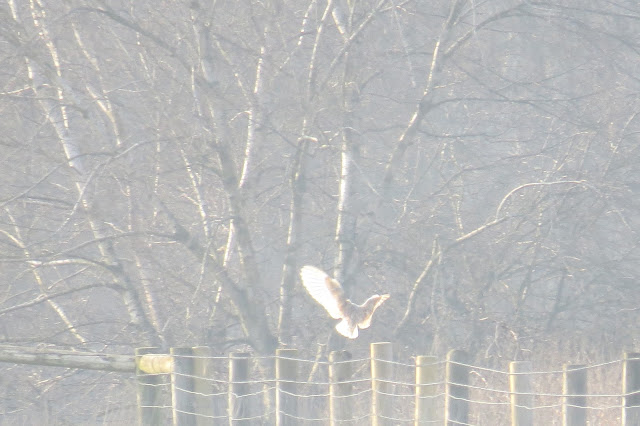What separates a weekday from a weekend during a pandemic lockdown? How do we move from home to somewhere new, while staying local and off public transit? When do I get a break from this dang laptop screen?
Last week, I decided I needed to get out into a new part of nature - badly! My housemates and I have been exploring the parks and streets of Norwich by foot, but this weekend, Collin and I took a (slightly) longer journey by bicycle. About eight miles from home, we arrived at Strumpshaw Fen, a marshy woodland and meadow preserve run by the Royal Society for the Protection of Birds, known as RSPB.
 |
| Strumpshaw Fen. |
 |
| A European robin ringing in the spring. |
 |
| I couldn't tell if this was a cherry or a plum. Turns out, it's a cherry-plum! Prunus cerasifera, a non-native fruit tree. |
 |
| Rough-stalked feather moss. |
 |
| Male catkin of a common alder. |
 |
| These black finger-like organisms were growing from a dead tree stump. The friendly folks at iNaturalist identified it by the wonderful name of candlesnuff fungus, Xylaria hypoxylon. |
 |
| Cypress-leaved plait moss. |
 |
| Oh hey there, greylag goose. |
 |
This shelf fungus grows on dead trees. It's called turkey tail, Trametes versicolor.
|
 |
| These ring-necked pheasants scurried through the underbrush, trying to keep a low profile, but their faces glowed ruby red when the sun hit them. |
 |
| My patient birding companion, Collin. |
 |
| A western marsh harrier soars low over the wet meadow. |
 |
| Two great tits explore the moss. |
After walking the Woodland Loop at Strumpshaw, we had an hour of daylight left, so we biked a mile up the road to another RSPB preserve, Buckenham Marsh.
 |
| Can you see the sugar factory billowing steam on the horizon? Marshes in Norfolk tend to look very similar to wet cattle pastures... down to the grazing cattle! |
 |
| A northern lapwing, one of hundreds that flew overhead in a flappy mass. |
 |
| Collin snuck this photo of me. Glorious bird-watching in action. |
As we unlocked our bicycles for the chilly nine-mile ride home, a pair of birders gasped and pointed at something across the marsh.
"A barn owl!" I heard one say to the other.
Collin and I scurried over, unused to human interaction and keeping the awkward six-feet-plus COVID distance.
The pair pointed to a beautiful white owl with a round, flat face. She was swooping casually from fence post to post. Not in any hurry to catch prey, not frantic with the hunt. She seemed to be an early riser, just getting her bearings at dusk.


















